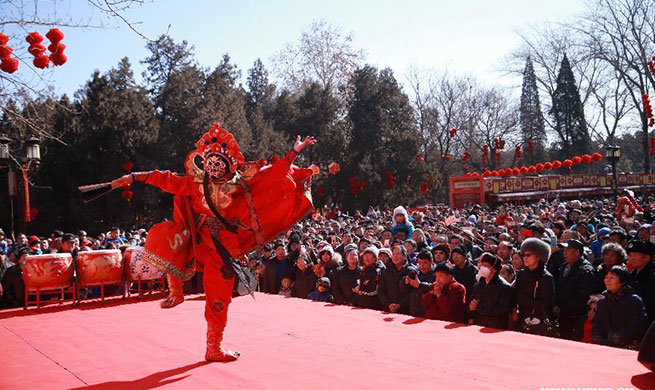SALT LAKE CITY, the United States, May 11 (Xinhua) -- The Central Pacific Railroad completed 150 years ago still serves as a cultural link between Chinese and American people, said Shen Weihong, the author of a Chinese book titled "Golden Spike."
The Golden Spike was the final spike driven into the rail track to join the Central Pacific and Union Pacific railroads in 1869, creating the U.S. transcontinental railroad. The 150th anniversary of the Golden Spike ceremony was held Friday at Promontory Summit in Salt Lake City, U.S. western state of Utah.
"After one century and a half, the railroad acts as a cultural bond for individuals and a practical link for China and the United States," Shen said Friday after attending the commemoration.
After graduation from university in 1993, Shen worked at the overseas Chinese office of Guangdong Province in south China. It was her job to receive people of Chinese origin who wanted to track their family roots.
In 2001, Shen and her colleagues were asked to review a TV series about Chinese workers in American history. She was moved by the life of the Chinese workers and decided to reveal more about their life.
Almost a dozen years later, the Guangdong provincial government decided in 2012 to amend the history of overseas Chinese coming from Guangdong. It became imperative that a field survey about how Chinese workers helped build the U.S. transcontinental railway had to be carried out.
Leading a four-member team, Shen started from San Francisco and traveled eastward along the railway to several major cities and some historic sites, tracking the footsteps of those coming from Guangdong at that time.
"What impressed us were the commemorative monuments established by local Chinese communities and town governments, which remembered the Chinese workers' American dream and paid tribute to their contribution and dedication," the author said.
After collecting more materials and interviewing the descendants of railroad workers in Guangdong, Shen started to write her book in May 2014, right after she returned from Salt Lake City attending the 150th anniversary of Chinese workers' participation in building the Central Pacific Railroad, which was a railroad built eastward from Sacramento, California, to complete the western part of the "First Transcontinental Railroad" in North America.
It took Shen two and a half years to finish the 429-page book. "During that period I was totally obsessed with writing the book," she said.
With detailed illustrations and narrations, the book shows the life of Chinese working in the American west in the latter half of the 19th century, with specific attention to those Chinese who managed to built the 1,014-km Central Pacific Railroad in six years, which had been estimated to be completed in 14 years. As a result, as many as 1,200 Chinese workers lost their lives in the construction.
"For generations, the descendants of Chinese workers have been motivated by the diligence, perseverance and devotion," Shen said, adding that many of them have achieved remarkably in the United States.
When the descendants of Chinese railroad workers went back to their hometowns, they found the root of their traditions and values they had been observing in the United States. "For them it was a pilgrimage to search the origin of their ancestors, where they had never been," Shen said.
"For the two countries, the railroad is a shared history, and it implies a shared future which we have to work together to make it better," she said.













